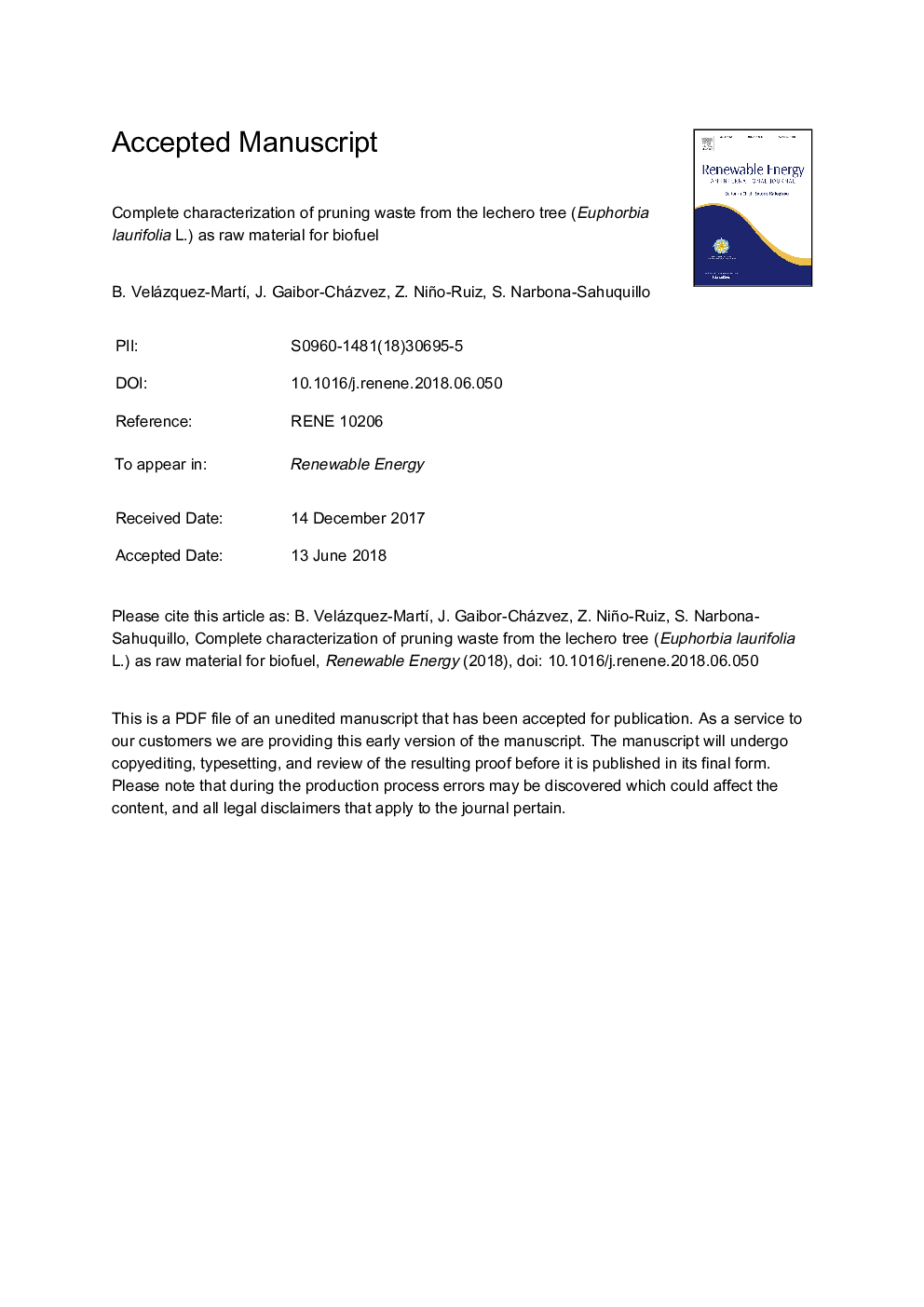| Article ID | Journal | Published Year | Pages | File Type |
|---|---|---|---|---|
| 6763974 | Renewable Energy | 2018 | 40 Pages |
Abstract
The aim of this study is to conduct a complete characterization of the pruning waste from the lechero tree. This tree species is of particular relevance in Ecuador for its use as biomass since it yields large amounts of pruning waste, it has a high propagation capacity and very fast growth, for both the trunk and branches. The pruning waste consists of a mixture of wood and leaves, which are subjected to caloric analysis, elemental analysis, proximate analysis, thermogravimetric analysis and fermentability. The average dry pruned biomass obtained per tree is 9.95â¯kg, with a 1.49â¯kg standard deviation. The average ratio of leaves in pruned biomass is the 40%. Regression model to determine pruning waste biomass from plant measurements was obtained with 0.7 of r2. The calorific value of these residues is 19â¯MJ/kg average. N and ash content is influenced by leaf content. A leaf content less than 25% represent N content lower than 1%, and 6% ash content. Prediction models to higher heat value (kJ/kg) based on elemental, proximate and structural analysis is presented.
Related Topics
Physical Sciences and Engineering
Energy
Renewable Energy, Sustainability and the Environment
Authors
B. Velázquez-MartÃ, J. Gaibor-Cházvez, Z. Niño-Ruiz, S. Narbona-Sahuquillo,
